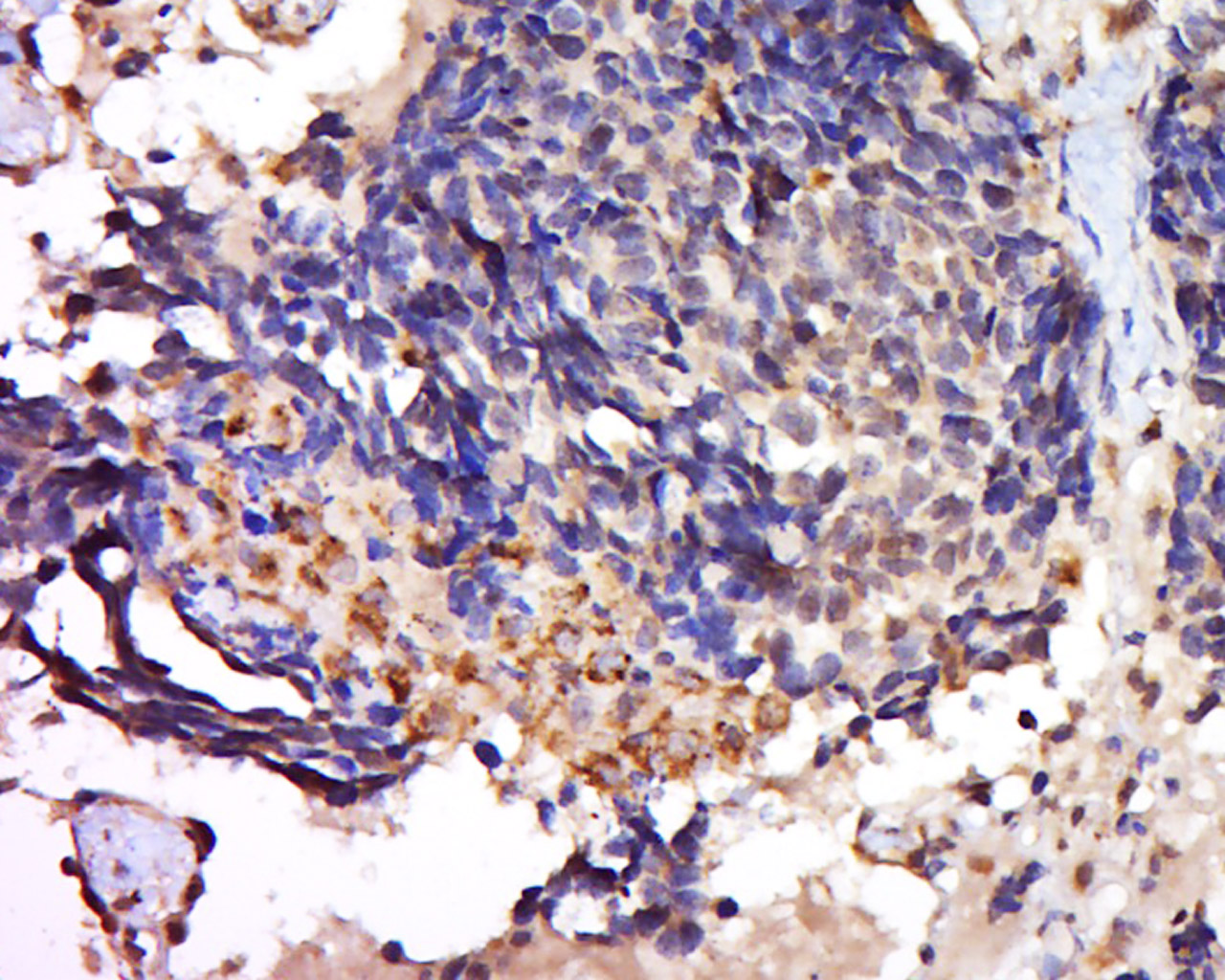
Rabbit Anti-Syntaxin 1a (brain)antibody
HPC 1; Neuron specific antigen HPC 1; Neuron specific antigen HPC1; Neuron-specific antigen HPC-1; OTTHUMP00000174615; OTTHUMP00000174616; OTTHUMP00000174617; OTTHUMP00000174618; P35 1; P35-1; STX 1; STX 1A; STX1; STX1A; STX1A_HUMAN; SYN1A; Syntaxin 1A (b
View History [Clear]
Details
Product Name Syntaxin 1A(brain) Chinese Name 突触融合蛋白1A抗体 Alias HPC 1; Neuron specific antigen HPC 1; Neuron specific antigen HPC1; Neuron-specific antigen HPC-1; OTTHUMP00000174615; OTTHUMP00000174616; OTTHUMP00000174617; OTTHUMP00000174618; P35 1; P35-1; STX 1; STX 1A; STX1; STX1A; STX1A_HUMAN; SYN1A; Syntaxin 1A (brain); Syntaxin 1A; Syntaxin 1A brain; Syntaxin-1A. Research Area Tumour Neurobiology Signal transduction Transporter Immunogen Species Rabbit Clonality Polyclonal React Species Human, (predicted: Mouse, Rat, Chicken, Dog, Pig, Cow, Horse, Rabbit, Sheep, ) Applications WB=1:500-2000 ELISA=1:5000-10000 IHC-P=1:100-500 IHC-F=1:100-500 IF=1:100-500 (Paraffin sections need antigen repair)
not yet tested in other applications.
optimal dilutions/concentrations should be determined by the end user.Theoretical molecular weight 33kDa Cellular localization The cell membrane Form Liquid Concentration 1mg/ml immunogen KLH conjugated synthetic peptide derived from human Syntaxin 1A: 185-288/288 Lsotype IgG Purification affinity purified by Protein A Buffer Solution 0.01M TBS(pH7.4) with 1% BSA, 0.03% Proclin300 and 50% Glycerol. Storage Shipped at 4℃. Store at -20 °C for one year. Avoid repeated freeze/thaw cycles. Attention This product as supplied is intended for research use only, not for use in human, therapeutic or diagnostic applications. PubMed PubMed Product Detail This gene encodes a bipartite protein with distinct amino- and carboxy-terminal domains. The amino-terminus contains nuclear localization signals and the carboxy-terminus contains numerous consecutive sequences with extensive similarity to proteins in the gelsolin family of actin-binding proteins, which cap, nucleate, and/or sever actin filaments. The gene product is tightly associated with both actin filaments and plasma membranes, suggesting a role as a high-affinity link between the actin cytoskeleton and the membrane. The encoded protein appears to aid in both myosin II assembly during cell spreading and disassembly of focal adhesions. Two transcript variants encoding different isoforms of supervillin have been described. [provided by RefSeq, Jul 2008]
Function:
Potentially involved in docking of synaptic vesicles at presynaptic active zones. May play a critical role in neurotransmitter exocytosis. May mediate Ca(2+)-regulation of exocytosis acrosomal reaction in sperm.
Subunit:
Part of the SNARE core complex containing SNAP25, VAMP2 and STX1A. This complex binds to CPLX1. Binds SYTL4 and STXBP6. Found in a ternary complex with STX1A and SNAP25. Interacts with OTOF and LGI3. Interacts with SLC6A4. Interacts with SYT6 and SYT8; the interaction is Ca(2+)-dependent. Found in a complex with VAMP8 and SNAP23. Interacts with VAPA and SYBU.
Subcellular Location:
Cytoplasmic vesicle, secretory vesicle, synaptic vesicle membrane; Single-pass type IV membrane protein. Cell junction, synapse, synaptosome. Isoform 2: Secreted (Probable).
Tissue Specificity:
Isoform 1 is highly expressed in embryonic spinal chord and ganglia and in adult cerebellum and cerebral cortex. Isoform 2 is expressed in heart, liver, fat, skeletal muscle, kidney and brain.
DISEASE:
Note=STX1A is located in the Williams-Beuren syndrome (WBS) critical region. WBS results from a hemizygous deletion of several genes on chromosome 7q11.23, thought to arise as a consequence of unequal crossing over between highly homologous low-copy repeat sequences flanking the deleted region.
Similarity:
Belongs to the syntaxin family.
Contains 1 t-SNARE coiled-coil homology domain.
SWISS:
Q16623
Gene ID:
6840
Database links:Entrez Gene: 6804 Human
Entrez Gene: 20907 Mouse
Omim: 186590 Human
SwissProt: Q16623 Human
SwissProt: O35526 Mouse
SwissProt: Q5R4L2 Orangutan
Unigene: 647024 Human
Unigene: 6225 Mouse
Unigene: 9943 Rat
交换和转运(Trafficking and Transport)
突触前膜上的一种蛋白被认为是一种调节突触释放神经递质的膜内蛋白,有学者认为:Syntaxin1在细胞中与囊泡和质膜的融合有关。Product Picture
Antigen retrieval: citrate buffer ( 0.01M, pH 6.0 ), Boiling bathing for 15min; Block endogenous peroxidase by 3% Hydrogen peroxide for 30min; Blocking buffer (normal goat serum,C-0005) at 37℃ for 20 min;
Incubation: Anti-Syntaxin 1A(brain) Polyclonal Antibody, Unconjugated(SL1486R) 1:600, overnight at 4°C, followed by conjugation to the secondary antibody(SP-0023) and DAB(C-0010) staining
Bought notes(bought amounts latest0)
No one bought this product
User Comment(Total0User Comment Num)
- No comment



 +86 571 56623320
+86 571 56623320
 +86 18668110335
+86 18668110335

